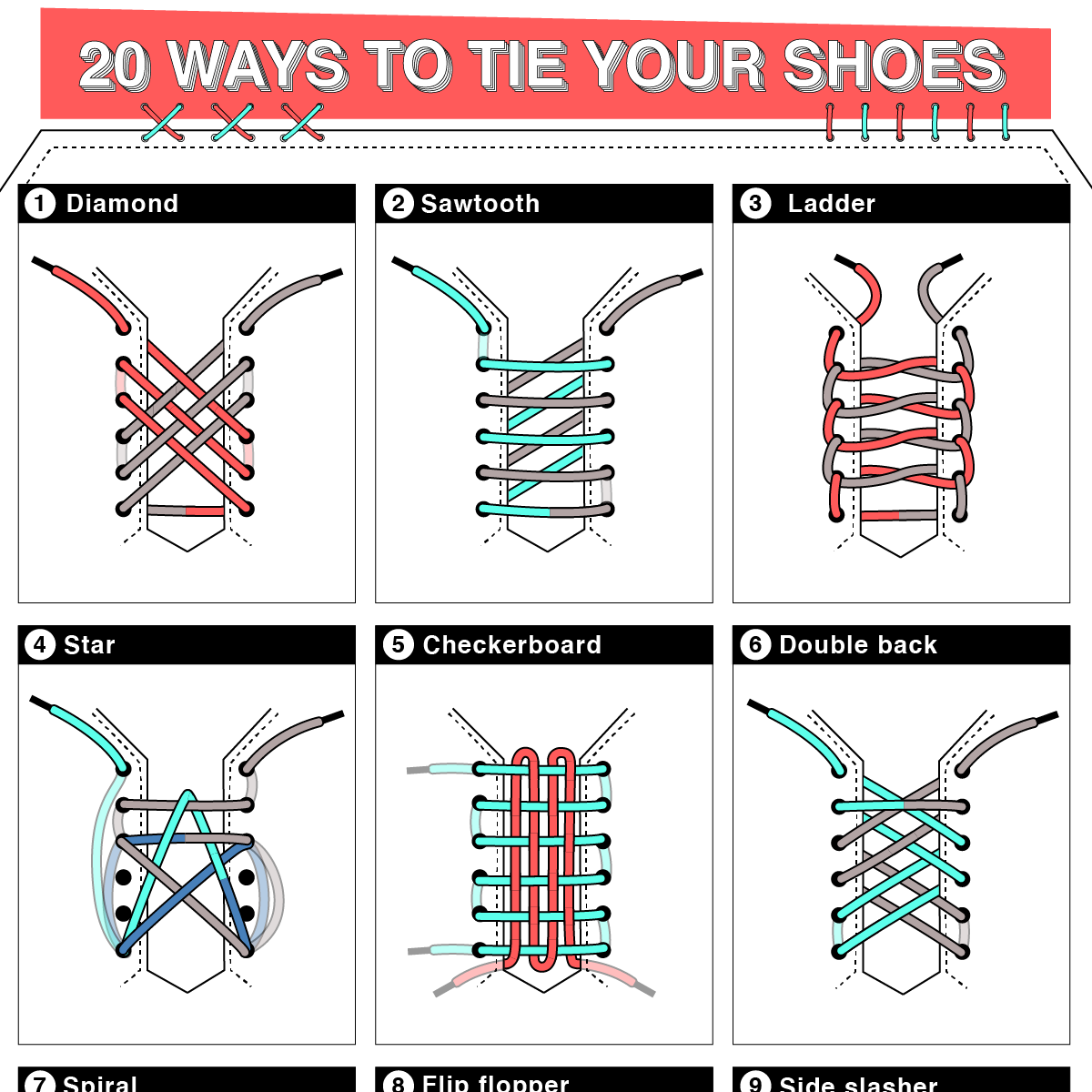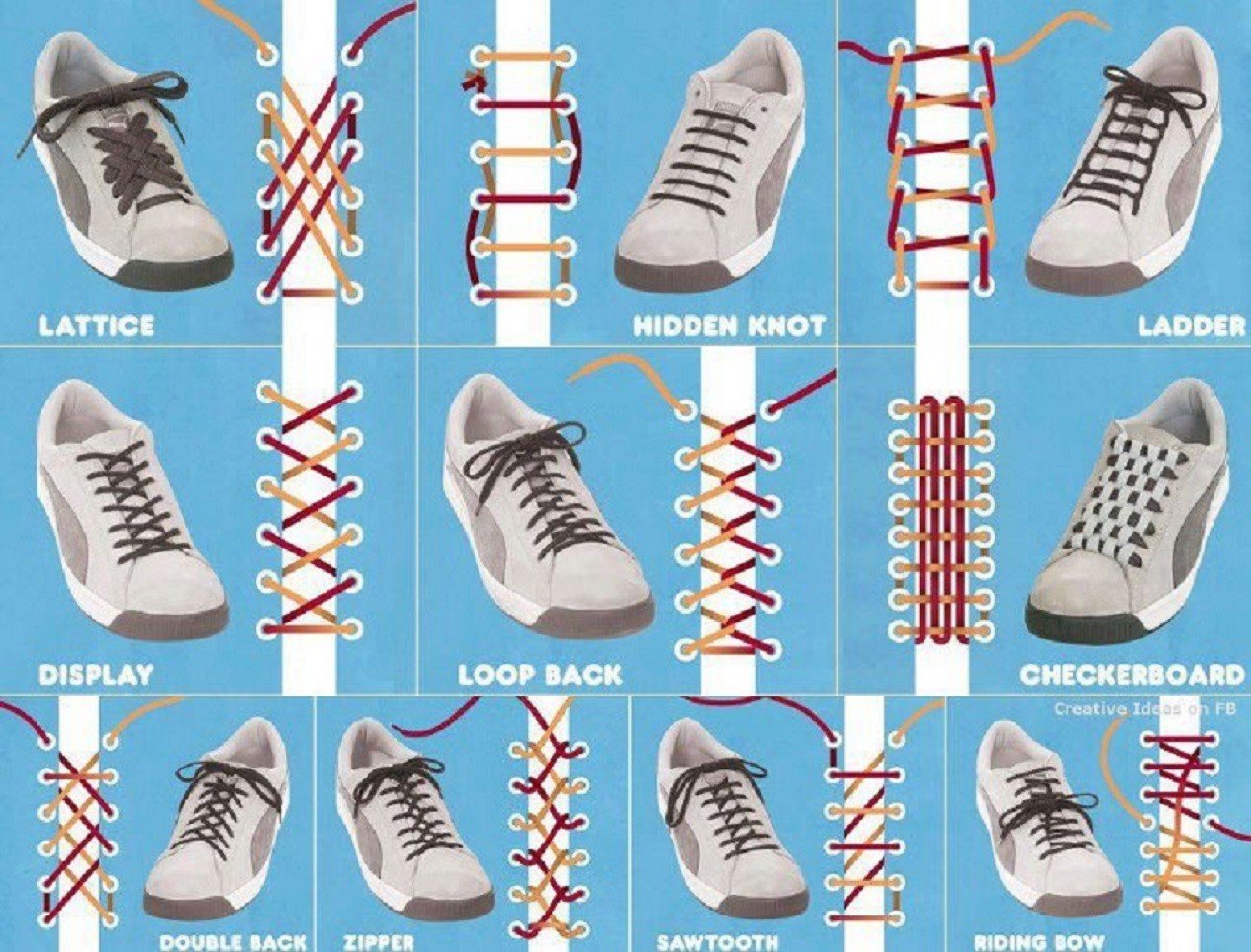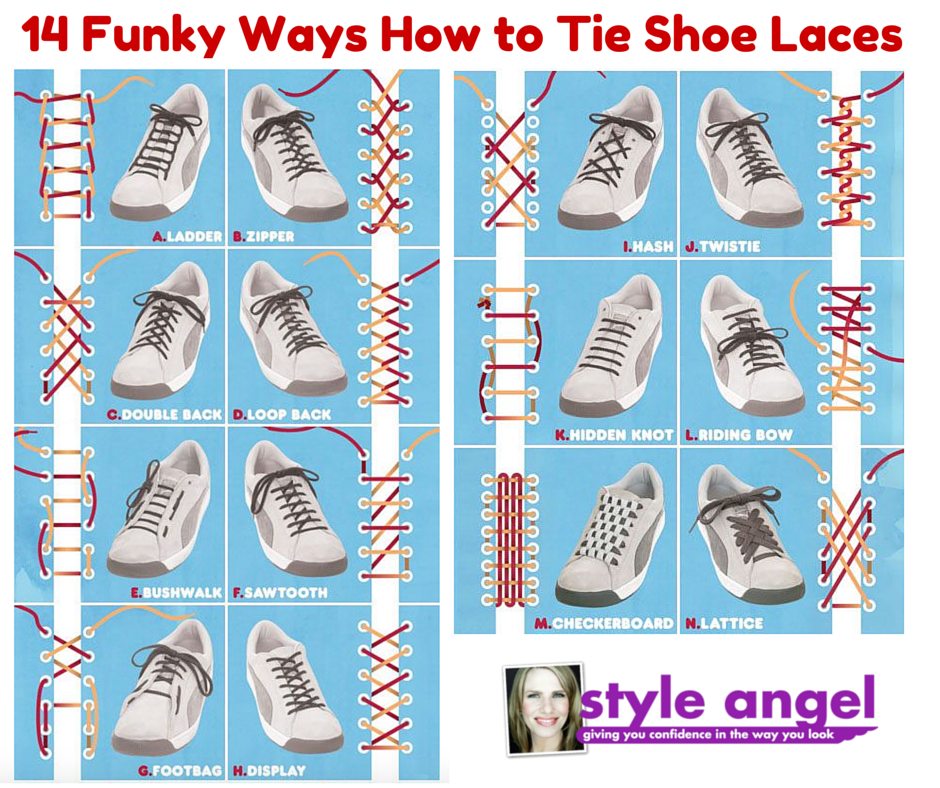When it comes to footwear, how you tie your shoes can reflect your personality, enhance comfort, and even improve performance. Whether you’re an athlete needing a snug fit, or a fashionista looking for a stylish flair, exploring different ways to tie shoes can transform your footwear experience. Let’s delve into a variety of lacing techniques, and tips, and find out how each method can make a difference!
Why the Way You Tie Your Shoes Matters
Many shoe enthusiasts overlook the significance of lacing techniques, but the way you tie your shoes impacts several factors:
- Comfort: Proper lacing can prevent discomfort and blisters.
- Performance: Athletes often require specific lacing styles for optimal performance.
- Style: Different knots and lacing techniques can elevate your overall aesthetic.
With numerous ways to tie shoes, it’s essential to find the right balance between functionality and flair.

Common Lacing Techniques
1. The Standard Criss-Cross Lacing
The criss-cross technique is the most common way to tie shoes. It’s simple, effective, and offers a secure fit for various types of footwear.

To tie your shoes using this method:
- Start with the laces threaded through the bottom eyelets of the shoe.
- Take the lace on the right and thread it through the next left eyelet, then the left lace through the next right eyelet.
- Repeat until you reach the top of the shoe.

Pros and Cons
| Pros | Cons |
|---|---|
| Simple and quick to do | Can become loose with heavy activity |
| Widely recognized and used | Less customizable for style |
2. The Bunny Ears Method
Especially popular among children, the bunny ears method is both engaging and effective.

Here’s how to do it:
- Make two loops (or “bunny ears”) with the laces.
- Cross the ears over each other and tuck one under the other.
- Pull tight to secure.

Pros and Cons
| Pros | Cons |
|---|---|
| Fun and easy for kids to learn | Can look less polished |
| Effective for keeping shoes tied | May come undone during vigorous activity |
3. The Double Knot
If you’re tired of your shoelaces coming undone, consider the double knot method.

This technique is straightforward:
- Tie your laces in a standard knot.
- Instead of pulling tight, make another knot with the loops.

Pros and Cons
| Pros | Cons |
|---|---|
| Very secure | May be hard to untie |
| Good for active lifestyles | Can look bulky |
4. The Lattice Lacing
Lattice lacing adds a unique twist to your shoes and can be particularly eye-catching.
To achieve lattice lacing:
- Start with criss-cross lacing but add diagonal sections by pulling one lace to the side over the opposite lace in each row.
- Continue this pattern until reaching the top of the shoe.
Pros and Cons
| Pros | Cons |
|---|---|
| Stylish and unique | Can be complicated to tie |
| Even pressure distribution | May not be as secure during heavy activity |
5. The Straight (European) Lacing
This style is often preferred for a clean look and reduces lace tangling.
Here’s how to do straight lacing:
- Insert the laces into the bottom holes.
- Run the lace straight across to the opposite side.
- Continue lacing straight across without crisscrossing.
Pros and Cons
| Pros | Cons |
|---|---|
| Neat appearance | Less adjustable tension |
| Reduced lace wear | Not suitable for all shoe types |
Specialty Tying Techniques
1. Heel Lock (Runner’s Tie)
The heel lock technique is perfect for runners who want to prevent heel slippage.
Follow these steps to tie a heel lock:
- Thread the lace through the bottom eyelets.
- Cross the laces as usual, but on the last two eyelets, don’t pull the laces fully through, leaving a loop.
- Wrap the lace through the loop and pull tight.
Pros and Cons
| Pros | Cons |
|---|---|
| Prevents heel lift | Can be tricky to master |
| Improves overall fit | Not useful for all shoe styles |
2. The Bow Tie Lacing
If you’re looking for a distinct style, the bow tie method offers a fashionable twist.
Here’s how to do it:
- Use the standard criss-cross method but create loops at the ends.
- Instead of crossing the loops, keep them parallel next to each other.
Pros and Cons
| Pros | Cons |
|---|---|
| Unique and stylish | Less secure for running |
| Great conversation starter | May require practice to become proficient |
3. The Kangaroo Lace
The kangaroo lace ties your shoes in a fun way, keeping them snug without compromising style.
To create this look:
- Begin with standard lacing and create a loop on both ends.
- Cross one loop over the other, pull through, and secure.
Pros and Cons
| Pros | Cons |
|---|---|
| Fun and creative | Can be less practical |
| Great for casual outfits | Not recommended for athletic footwear |
Real-World Footwear Experiences
Case Study: Runners’ Preference
In a survey conducted by the American Running Association, nearly 70% of respondents noted that the way they tie their shoes directly impacts comfort during their runs. Those using the heel lock method reported a significant decrease in blisters and improved shoe fit.
Fashion Focus: Stylish Lacing in Everyday Life
Fashion-forward individuals often use unique lacing styles to express their creativity. Social media has become a platform for showcasing different lacing techniques, making them a trend among influencers and sneaker enthusiasts alike. For instance, Instagram posts featuring lattice lacing received over 100,000 likes collectively, proving that lacing styles can be as varied as the shoes themselves.
Tips for Choosing the Right Lacing Technique
1. Consider Your Footwear Type
Different styles of shoes benefit from different lacing techniques. Athletic shoes, dress shoes, and casual sneakers serve distinct purposes and aesthetics. For instance, runners may prefer techniques that minimize movement, while dress shoes may benefit from simpler styles for a polished look.
2. Be Mindful of Your Activities
The way you tie your shoes should reflect your daily activities. If you lead an active lifestyle, opt for secure methods like the double knot or heel lock. On the other hand, if you’re going for a casual outing, experiment with more stylish techniques.
3. Try Multiple Styles
Don’t hesitate to switch up your lacing technique based on your mood or occasion. Trying different styles can be a fun way to personalize your footwear and discover what works best for you.
Product Highlights: Best Shoelaces for Different Techniques
1. Flat vs. Round Laces
Choosing the right laces is just as important as the tying technique. Flat laces provide a more secure grip, while round laces are often easier to tie and are seen in casual footwear. Depending on your preferred lacing technique, one might work better than the other.
2. Elastic Laces for Convenience
For those who crave ease, elastic laces can be a game changer. They allow you to slip your shoes on and off without tying them every time, making them ideal for busy lifestyles. Many athletes prefer this style for its practicality.
3. Specialty Laces for Athletic Shoes
Brands like Lock Laces offer specialty elastic laces designed specifically for runners and athletes. They reduce the risk of tripping and provide added support, making them an attractive option for those in need of durable, reliable footwear. You can find more details about Lock Laces here.
Frequently Asked Questions (FAQs)
1. How do I choose the best lacing method for my shoes?
The best lacing method depends on the type of shoe, the activity you’ll be doing, and your personal style preference. Test out different techniques to see which feels most comfortable for you.
2. Can I use the same lacing technique for all types of shoes?
While many techniques are versatile, some styles may be more suitable for specific types of shoes. Athletic shoes often require secure methods, while casual shoes may accommodate more stylish options.
3. What materials are best for shoelaces?
Flat laces made from nylon or cotton are popular for durability, while elastic laces are favored for convenience. Your choice will depend on your preferences and the shoe’s purpose.
4. How can I prevent my shoelaces from coming undone?
Consider using a double knot or a heel lock method. Additionally, using rubber lace locks can help secure your laces and prevent them from coming undone during activities.
5. Do different lacing styles affect foot health?
Yes, the way you tie your shoes can influence comfort and health. Proper lacing can help avoid blisters, improve circulation, and provide better arch support.
6. Is there a lacing technique for wide feet?
For wide feet, consider using techniques that allow for more space, such as straight lacing or skipping an eyelet. This can help prevent pinching and increase comfort.
7. Can I learn lacing techniques through online videos?
Absolutely! Many tutorials are available on platforms like YouTube, providing step-by-step guidance on various lacing techniques.
8. How can I clean my shoelaces?
Most shoelaces can be washed in cold water with mild detergent. For stubborn stains, let them soak for a while before scrubbing gently.
9. How often should I check my shoelaces for wear?
Inspect your laces regularly, especially if you engage in physical activities. Worn laces can pose a safety risk, so replace them as needed.
10. Are there any lacing techniques specifically for kids’ shoes?
The bunny ears method is a fantastic option for kids, as it’s easy to learn and fun to do. It helps instill a sense of independence in children as they learn to tie their shoes.
11. What should I do if my laces are too long?
If your laces are too long, consider doubling up your knots or trimming the ends. Be sure to singe the ends slightly to prevent fraying.
Conclusion
Exploring different ways to tie shoes is an exciting journey that offers both functionality and flair. From criss-cross lacing to intricate designs, there’s a method that suits every personality and activity. Don’t hesitate to experiment with various techniques to discover what works best for you. Whether you’re striding through a marathon or stepping into a casual gathering, the right lacing technique can elevate your footwear experience. So go ahead, tie those shoes your way!